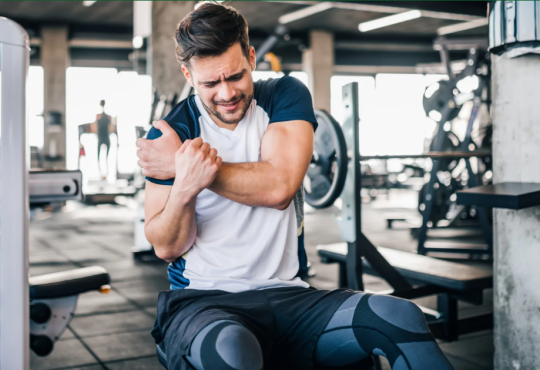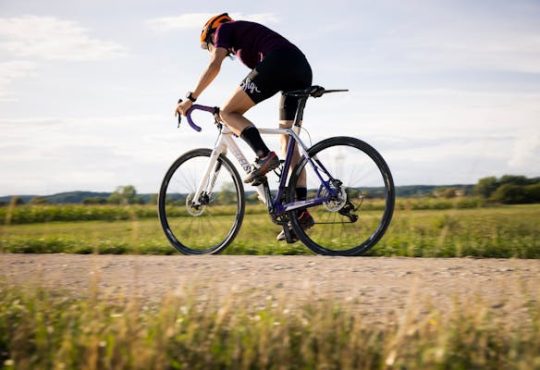Running is one of the simplest and most effective ways to stay fit, and yet it can also be one of the most demanding activities on your body. Whether you’re an elite marathoner or a casual jogger, choosing the right pair of running shoes is crucial for comfort, injury prevention, and performance. In this comprehensive guide, we will dive deep into the world of running shoes, helping you to find the best running shoes that cater to your specific needs.

The Importance of the Right Running Shoes
For many runners, shoes are the most important piece of gear. They form the primary barrier between your body and the hard surface you pound on during each run. Having the right running shoes can:
- Improve performance: Proper running shoes are designed to optimize your running mechanics, which can help you run faster and more efficiently.
- Prevent injuries: Poorly fitted or unsuitable shoes can lead to injuries like plantar fasciitis, shin splints, and stress fractures.
- Provide comfort: Comfort is key to enjoying your run, and the best running shoes should make you feel like you could go for miles without discomfort.
How Running Shoes Are Designed
Before we dive into picking the best running shoes, it’s important to understand the basic design components that make up running shoes and how they affect performance and comfort.
1. Outsole
The outsole is the bottom part of the shoe that makes contact with the ground. It is typically made of rubber or other durable materials to withstand wear and tear. Different shoes feature different outsole designs, with tread patterns that vary based on whether the shoes are intended for road running, trail running, or cross-country.
2. Midsole
The midsole is where most of the cushioning happens. It’s typically made from materials like EVA foam or polyurethane and provides shock absorption and energy return. The thickness and firmness of the midsole vary between shoes, influencing the shoe’s cushioning and responsiveness.
3. Upper
The upper part of the shoe encompasses the material that covers the top of the foot. This can be made from mesh, leather, or synthetic fabrics. Breathability, flexibility, and durability are key factors in the upper’s design. Modern running shoes often use lightweight, breathable mesh to help keep feet cool.
4. Heel Counter
The heel counter is the rigid structure that supports the heel. It stabilizes the foot, preventing excessive movement during the gait cycle. A good heel counter can improve stability and reduce the risk of injury.
5. Toe Box
The toe box is the front part of the shoe that houses the toes. Shoes with wider toe boxes are preferred by runners with broader feet or those who experience toe discomfort during long runs.
6. Drop (Heel-to-Toe Offset)
The drop refers to the difference in height between the heel and the toe. Shoes with a higher drop (usually 8-12mm) promote heel-striking, while those with a lower drop (0-4mm) encourage a more natural midfoot or forefoot strike. Minimalist running shoes typically have a zero-drop profile to simulate barefoot running.
Types of Running Shoes
The best running shoes for you will depend on your running style, foot shape, and the surfaces you run on. Here’s an overview of the main types of running shoes:
1. Road Running Shoes
These shoes are designed for pavement and concrete surfaces, which make up the majority of urban running environments. Road running shoes are typically lightweight, with smooth outsoles for minimal resistance. They are best suited for runners who prioritize speed and flexibility on hard, even surfaces.
2. Trail Running Shoes
If you run on uneven terrain, such as dirt paths, mountains, or forests, trail running shoes are ideal. These shoes offer enhanced grip and protection, with aggressive outsole patterns and reinforced uppers to guard against rocks, roots, and other hazards.
3. Cross-Training Shoes
For runners who mix their running with gym workouts or other cross-training activities, cross-training shoes are a good fit. These shoes are versatile and durable, providing lateral support that can handle activities like weightlifting, plyometrics, and agility drills.
4. Stability Shoes
Designed for runners who overpronate (roll their feet inward excessively), stability shoes feature added support in the arch and heel. This helps prevent injuries by correcting improper foot alignment during running.
5. Neutral Shoes
For runners with a neutral gait, neutral running shoes offer a balanced level of cushioning and support. These shoes allow the foot to move more naturally, without extra stability features. They are the best running shoes for those who have no specific gait abnormalities.
6. Minimalist or Barefoot Shoes
Minimalist shoes aim to mimic the sensation of running barefoot while still providing a minimal amount of protection. These shoes often feature zero drop and very little cushioning, encouraging runners to engage the muscles in their feet and legs more actively.
How to Choose the Best Running Shoes for You
The running shoe market is flooded with options, and it can be overwhelming to figure out which pair is right for you. However, there are several key factors you can consider to narrow down your choices:
1. Foot Type and Pronation
Understanding your foot type and gait is essential in selecting the best running shoes. Most people fall into one of three categories:
- Overpronation: Your feet roll inward excessively as you run, placing extra stress on the knees and ankles. Stability shoes or motion control shoes are best for overpronators.
- Underpronation (Supination): Your feet roll outward when you run, which can lead to increased shock on the legs. Neutral shoes with added cushioning are ideal for underpronators.
- Neutral: Your feet strike the ground evenly, so neutral shoes with balanced cushioning are appropriate.
To determine your foot type, you can visit a specialty running store where they can analyze your gait, or you can use the “wet test.” Wet your feet and step onto a piece of paper. The outline left by your foot will help you identify your arch type—flat arches typically correspond to overpronation, high arches to underpronation, and medium arches to neutral pronation.
2. Running Surface
The surface you run on will impact your shoe selection. If you predominantly run on roads or pavements, a lightweight road running shoe with adequate cushioning and a smooth outsole will suit you best. Trail runners, on the other hand, should look for rugged shoes with aggressive treads to handle uneven terrain.
3. Running Distance and Frequency
Are you running for short distances or preparing for a marathon? The longer the distance you run, the more cushioning and support your shoes need. Daily runners should invest in shoes that provide sufficient durability and protection, while occasional runners might prioritize comfort and flexibility.
4. Cushioning Preferences
Some runners prefer a plush, cushioned ride, while others like a more responsive feel. Shoes with more cushioning tend to offer greater shock absorption, which is helpful for longer runs, but they may feel heavier. Less cushioned shoes are lighter and more responsive, making them better for speed training or shorter races.
5. Fit and Comfort
Your running shoes should feel comfortable from the moment you put them on. Ensure there is enough room in the toe box for your toes to wiggle, but the shoe should also fit snugly around the midfoot and heel. Try shoes on in the afternoon or after a run, when your feet are slightly swollen, to get an accurate fit.
Best Running Shoe Brands and Models
With so many brands competing for the title of the best running shoes, it can be difficult to decide which one is worth your money. Here are some of the most respected brands and their flagship running shoe models:
1. Nike
Nike is one of the leading brands in running shoes, known for its innovative technology and design. Some of their most popular running shoes include:
- Nike Air Zoom Pegasus: A versatile and durable shoe suitable for most types of runners. It offers a good balance of cushioning and responsiveness, making it a top choice for road running.
- Nike ZoomX Vaporfly NEXT%: This is Nike’s premium racing shoe, built for speed with its ZoomX foam and carbon-fiber plate. It’s often regarded as one of the best running shoes for elite marathoners.
2. Adidas
Adidas combines stylish design with cutting-edge performance technology. Their Boost cushioning has been particularly popular among runners.
- Adidas Ultraboost: Known for its extreme comfort, the Ultraboost is often chosen by long-distance runners. Its Boost midsole provides superior cushioning and energy return.
- Adidas Adizero Adios Pro: A favorite among competitive runners, this lightweight shoe incorporates carbon rods in the midsole for enhanced propulsion.
3. Brooks
Brooks is a brand known for creating shoes that prioritize comfort and injury prevention. They offer shoes for a variety of running styles and foot types.
- Brooks Ghost: A reliable neutral shoe with excellent cushioning. It’s one of the best running shoes for both beginner and seasoned runners.
- Brooks Adrenaline GTS: This is one of the most popular stability shoes on the market, ideal for overpronators who need extra support.
4. Asics
Asics is renowned for producing high-quality running shoes that focus on performance and injury prevention.
- Asics Gel-Kayano: A top choice for runners looking for a stability shoe, the Gel-Kayano offers plush cushioning and strong support for overpronators.
- Asics Gel-Nimbus: A premium cushioned shoe designed for neutral runners, the Gel-Nimbus is perfect for long-distance running.
5. Hoka One One
Known for their maximum cushioning and oversized midsoles, Hoka One One shoes offer exceptional comfort and shock absorption.
- Hoka Clifton: A highly cushioned yet lightweight shoe that provides a soft, smooth ride. It’s one of the best running shoes for long-distance training.
- Hoka Speedgoat: A rugged trail shoe with ample grip and protection for off-road running.
6. Saucony
Saucony produces a range of running shoes that combine comfort, performance, and affordability.
- Saucony Ride: A neutral shoe with moderate cushioning, perfect for everyday runs.
- Saucony Peregrine: A trail running shoe with aggressive traction, making it ideal for runners tackling tough terrain.
Maintenance and Longevity of Running Shoes
Even the best running shoes won’t last forever. Here are some tips to ensure that your running shoes last as long as possible:
1. Rotate Shoes
If you run frequently, it’s a good idea to have multiple pairs of running shoes. Rotating between pairs allows the cushioning in each pair to recover between runs, which can extend their lifespan.
2. Monitor Wear and Tear
Running shoes should typically be replaced every 300-500 miles, depending on the shoe’s build and your running style. Check for signs of wear such as uneven treads, thinning soles, or reduced cushioning. If your shoes feel less supportive or comfortable than they used to, it may be time for a new pair.
3. Dry Shoes Properly
After a rainy or sweaty run, don’t leave your shoes in a damp gym bag. Instead, stuff them with newspaper and let them air dry. Avoid using direct heat sources like radiators, as this can warp the shoe’s materials.
Conclusion
Choosing the best running shoes is an investment in your running journey, your performance, and, most importantly, your overall health. Whether you’re an experienced marathoner or a casual jogger, the right pair of shoes can make all the difference. Be sure to consider your foot type, running style, and the surfaces you frequent when selecting shoes. By taking the time to find the best running shoes for you, you can reduce the risk of injury and make your running experience more enjoyable.
No matter which shoe you choose, remember that comfort is key. A well-fitted shoe that complements your natural running mechanics will not only make you a better runner but will also keep you running injury-free for years to come. Happy running!





